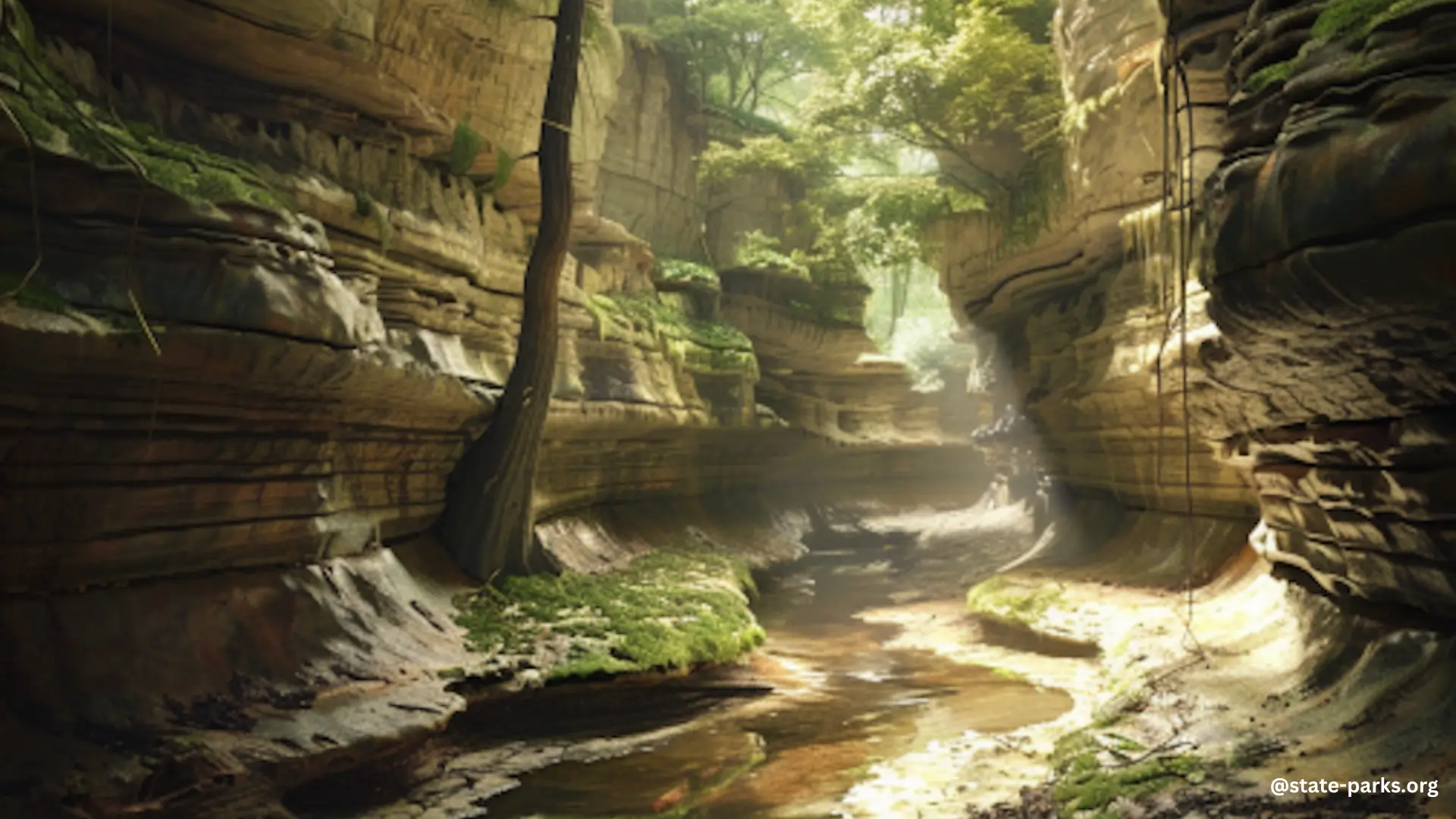Starved Rock State Park is a popular outdoor destination located in Utica, Illinois, offering visitors a chance to immerse themselves in the natural beauty of the region. The park’s main entrance, situated along the Illinois River, serves as the gateway to a world of hiking trails, stunning canyons, and rich historical significance. In this blog post, we’ll delve into the details of the Starved Rock State Park Entrance, providing you with the information you need to plan your visit and make the most of your experience.
The Starved Rock State Park Entrance
The Starved Rock State Park Entrance is located off of Route 178, providing easy access to the park’s main facilities and amenities. The entrance is marked by a large sign and a well-paved road that leads visitors directly to the Visitor Center and the main parking lot. This entrance is the primary access point for the park, and it’s where most visitors begin their exploration of Starved Rock.
Visitor Center and Parking

Upon entering the park, the first stop for many visitors is the Starved Rock Visitor Center. This facility serves as the hub of information and operations for the park, offering a range of services and resources for guests. Inside, you’ll find an interpretive center with exhibits and displays that provide insights into the park’s history, geology, and wildlife. The Visitor Center also houses the park office, where you can obtain maps, purchase permits, and inquire about upcoming events and programs.
Adjacent to the Visitor Center is the main parking lot, which can accommodate a large number of vehicles. This parking area is conveniently located near the trailheads, making it easy for visitors to access the park’s hiking trails and explore the canyons.
Trails and Canyons
From the Starved Rock State Park Entrance, visitors can access the park’s extensive trail system, which includes over 13 miles of hiking paths. These trails wind through the park’s 18 unique canyons, each offering its own distinct geological features and scenic vistas. Some of the most popular trails include the Starved Rock Trail, the Lover’s Leap Trail, and the Wildcat Canyon Trail, each offering a unique perspective on the park’s natural wonders.
Picnic Areas and Campground
In addition to the hiking trails and canyons, the Starved Rock State Park Entrance also provides access to the park’s picnic areas and campground. The picnic areas are equipped with tables, grills, and restroom facilities, making them an ideal spot for a leisurely lunch or a family gathering. The Starved Rock Campground, located within the park, offers 133 Class-A Premium Camp Sites, complete with electricity, bathhouses, and firewood available 24/7.
Historical Significance
The Starved Rock State Park Entrance is not only a gateway to the park’s natural wonders but also a portal to its rich history. The park’s name is derived from a Native American legend, and the area has been inhabited by various indigenous groups for centuries. The Civilian Conservation Corps also played a significant role in the park’s development during the 1930s, constructing the Lodge and trail systems that visitors can still enjoy today.
Visitor Information and Amenities
The Starved Rock State Park Entrance provides access to a range of visitor amenities and services. The Visitor Center, as mentioned earlier, serves as the central hub for information and resources, including park programs, events, and interpretive exhibits. Visitors can also find picnic areas, restrooms, and the Starved Rock Campground within the park’s boundaries.
Conclusion
The Starved Rock State Park Entrance is the gateway to a truly remarkable natural and historical destination. Whether you’re an avid hiker, a nature enthusiast, or simply seeking a peaceful outdoor escape, the park offers a wealth of opportunities for exploration and discovery. By understanding the key features and amenities available at the entrance, you can plan your visit to Starved Rock State Park and make the most of your time in this stunning Illinois landscape.
References:
- Starved Rock State Park, Illinois Department of Natural Resources, https://www.starvedrocklodge.com/starved-rock-state-park/
- Starved Rock State Park, Illinois Department of Natural Resources, https://dnr.illinois.gov/parks/park.starvedrock.html
- Starved Rock State Park Common Questions & Answers, Illinois Department of Natural Resources, https://dnr.illinois.gov/content/dam/soi/en/web/dnr/parks/documents/starvedrock-common-park-qa.pdf

